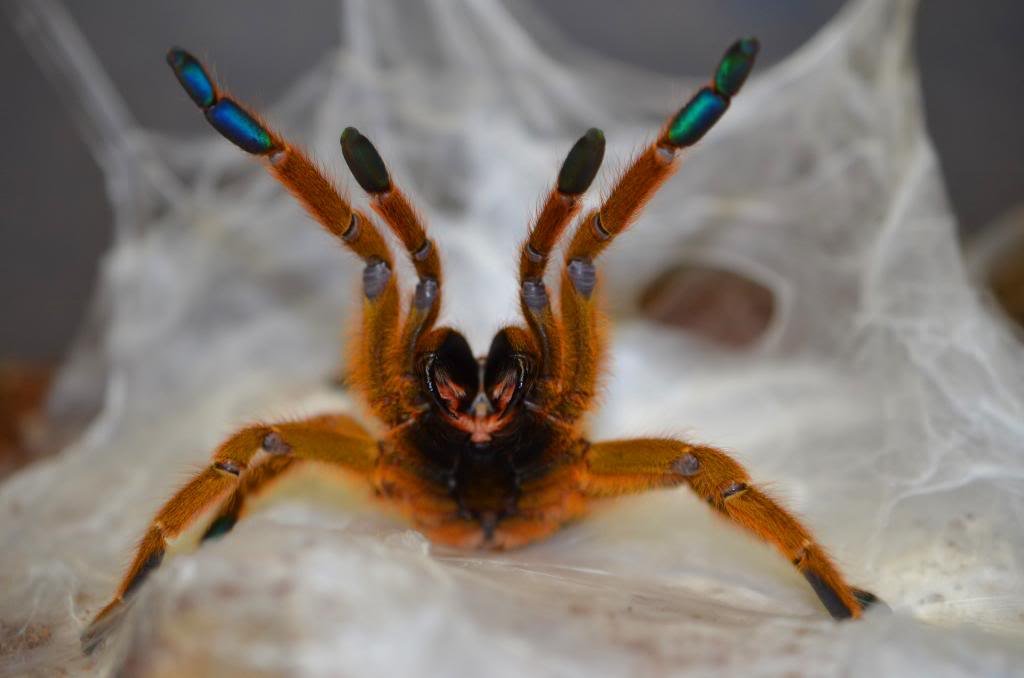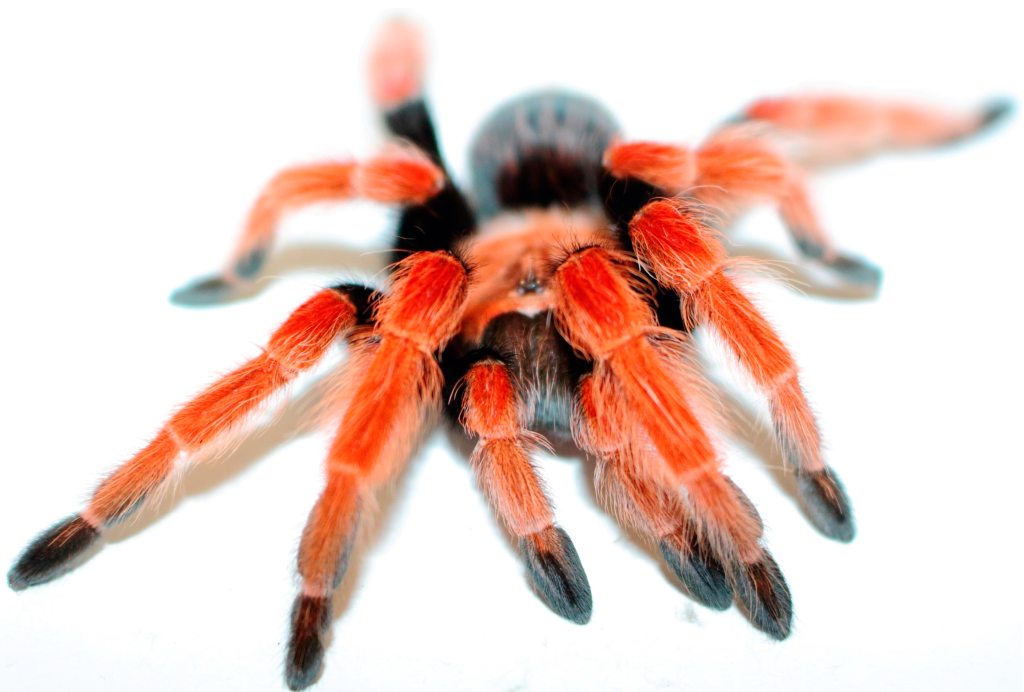If you’ve ever found yourself fascinated by the world of creepy crawlies, then you’re in for a treat! Prepare to embark on a journey into the mysterious realm of tarantulas as we explore their incredible growth potential. In our quest to understand just how large these eight-legged creatures can become, we’ll delve into the captivating world of arachnid enthusiasts, scientific research, and jaw-dropping anecdotes. Get ready to have your preconceptions shattered as we unveil the astonishing sizes tarantulas can reach in our article, “Size matters: Exploring the Growth Potential of Tarantulas.”
Size matters: Exploring the Growth Potential of Tarantulas

This image is property of i.redd.it.
Introduction to tarantula sizes
Tarantulas are fascinating creatures known for their size and unique appearance. These large, hairy spiders can vary significantly in size, with some species growing to impressive lengths. In this article, we will delve into the world of tarantula sizes, exploring the factors that influence their growth, the largest tarantula species, the implications of size in tarantulas, behavioral differences between small and large tarantulas, growth rates, size-related health concerns, caring for large tarantulas, and the fascination with giant tarantulas.
Overview of tarantulas
Tarantulas belong to the family Theraphosidae, and they can be found in various parts of the world. These arachnids are distinguished by their large sizes, hairy bodies, and impressive fangs. They come in a multitude of colors and patterns, making them a popular choice for exotic pet enthusiasts.
Size variation in tarantulas
Tarantulas exhibit significant size variation among different species. While some tarantulas grow to be relatively small, with leg spans of just a few inches, others can reach astounding sizes, with leg spans exceeding 12 inches in some cases. This size diversity makes tarantulas a captivating subject for researchers and enthusiasts alike.
Popular pet tarantula species
Many tarantula species are sought after as pets due to their manageable sizes and captivating appearances. Some of the more popular pet tarantulas include the Mexican Redknee (Brachypelma smithi), Chilean Rose Hair (Grammostola rosea), and the Pink Toe Tarantula (Avicularia avicularia). These species have become favorites among tarantula enthusiasts due to their relatively calm temperaments and overall ease of care.
Factors influencing tarantula size
Several factors influence the size of tarantulas. These factors include genetic traits, environmental conditions, availability of food sources, and the effect of temperature on growth.
Genetic factors
Genetics play a crucial role in determining the size potential of tarantulas. Different species have inherent growth traits that dictate their maximum size. Furthermore, within a species, individual tarantulas may have genetic differences that affect their ultimate size.
Environmental factors
Environmental conditions, such as the habitat in which a tarantula resides, can have a significant impact on its size. Tarantulas that live in areas with ample resources and ideal conditions are more likely to reach their maximum growth potential. Factors such as climate, humidity, and the presence of suitable shelters all play a role in determining the size of a tarantula.
This image is property of bdj.pensoft.net.
Availability of food sources
The availability and abundance of food sources also contribute to the growth potential of tarantulas. Tarantulas that have access to a varied diet and ample prey are more likely to grow larger compared to individuals with limited food sources. Feeding a balanced and nutritious diet is essential for promoting healthy growth in tarantulas.
Effect of temperature on growth
Temperature is another crucial factor that influences the growth of tarantulas. Tarantulas are ectothermic creatures, meaning their body temperature is reliant on their environment. Warmer temperatures generally promote more rapid growth, while cooler temperatures can slow down development. Maintaining an appropriate temperature range is vital for ensuring optimal growth in tarantulas.
The largest tarantula species
Several tarantula species are known for their impressive sizes. Here are some of the largest tarantula species:
Goliath birdeater (Theraphosa blondi)
The Goliath birdeater is often regarded as the largest tarantula species in the world. With a leg span that can reach up to 11 inches, this tarantula is an awe-inspiring sight. Despite its name, the Goliath birdeater primarily feeds on insects, although it occasionally preys upon small vertebrates as well.
Brazilian salmon pink (Lasiodora parahybana)
The Brazilian salmon pink is another giant tarantula species, with a leg span that can exceed 10 inches. This species is known for its docile temperament and is often kept as a pet. Its striking coloration, a vibrant salmon pink, adds to its allure.
Brazilian giant tawny (Pelinobius muticus)
Hailing from the forests of West Africa, the Brazilian giant tawny tarantula is a formidable species, both in size and appearance. With a leg span that can reach up to 10 inches, this tarantula commands attention.
Peruvian giant orange leg (Pamphobeteus antinous)
The Peruvian giant orange leg is a visually stunning tarantula species. With its bright orange legs and a leg span of around 9 inches, it is highly sought after by tarantula enthusiasts.

This image is property of npr.brightspotcdn.com.
Other giant tarantula species
In addition to the species mentioned above, there are several other tarantula species that boast impressive sizes, such as the Colombian giant redleg (Megaphobema robustum), Brazilian giant white knee (Acanthoscurria geniculata), and the Burgundy Goliath Birdeater (Theraphosa stirmi). Each of these species showcases the extraordinary diversity of size within the tarantula world.
Implications of size in tarantulas
The size of a tarantula has various implications for the species as a whole. It affects predator-prey relationships, territorial behavior, mating behavior, and even lifespan differences.
Predator-prey relationships
Size plays a crucial role in determining the predator-prey relationships of tarantulas. Larger tarantulas have an advantage over smaller predators, as their size and strength enable them to tackle bigger prey. This allows them to access a wider range of potential food sources.
Territorial behavior
The size of a tarantula can also influence its territorial behavior. Larger tarantulas may require larger territories to meet their needs for shelter and resources. They are more likely to defend their territories aggressively, ensuring their dominance over the area they inhabit.
Mating behavior
Size differences can significantly impact tarantula mating behavior. In many tarantula species, females are significantly larger than males. This size difference influences mating rituals, as males often engage in intricate courtship displays to attract potential mates.
Lifespan differences
Larger tarantulas tend to have longer lifespans compared to their smaller counterparts. With more resources available and a greater ability to combat predators, larger tarantulas have a higher chance of survival and can live for many years.
Behavioral differences between small and large tarantulas
Aside from the implications mentioned earlier, the size of a tarantula can also influence its behavior in several ways.

This image is property of jamiestarantulas.com.
Aggression levels
In general, larger tarantulas tend to exhibit higher aggression levels compared to smaller species. They are more likely to display defensive behavior and may be less tolerant of disturbances in their environment.
Web-building tendencies
Smaller tarantulas are generally more inclined to build intricate and extensive webs. These webs serve multiple purposes, including prey capture, shelter, and mating signaling. Larger tarantulas, on the other hand, may rely less on web-building due to their predatory nature and increased size.
Hunting techniques
The hunting techniques employed by tarantulas can also vary depending on their size. Smaller tarantulas often rely on speed and agility to capture prey, utilizing quick strikes and pouncing tactics. Larger tarantulas, with their increased size and strength, may employ ambush techniques or overpower their prey with brute force.
Feeding habits
Size influences the feeding habits of tarantulas. Smaller tarantulas typically consume smaller prey items, such as insects and small invertebrates. Larger tarantulas, however, have the ability to tackle larger prey, including small rodents, birds, and amphibians.
Growth rates of tarantulas
Tarantulas undergo growth stages throughout their lives, and their growth rates can be influenced by various factors.
Slow growth during early stages
Tarantulas experience relatively slow growth during their early stages of development. Spiderlings, or baby tarantulas, hatch from eggs and gradually molt their exoskeletons as they grow. The rate of growth during this stage is generally dependent on factors such as temperature, feeding regimen, and overall health.
Faster growth during maturity
Once tarantulas reach maturity, their growth rate tends to accelerate. However, the growth rate still varies among species, with some tarantulas reaching maturity in just a few years, while others may take well over a decade.

This image is property of pub.mdpi-res.com.
Factors affecting growth rates
Several factors can impact the growth rates of tarantulas. Adequate nutrition, proper husbandry techniques, and suitable environmental conditions are crucial for promoting optimal growth. Additionally, genetic factors and individual health can also play a role in determining the growth rate of tarantulas.
Size-related health concerns in tarantulas
As tarantulas grow in size, certain health concerns may arise. These include molting difficulties, joint and muscle problems, respiratory challenges, and heart and circulatory issues.
Molting difficulties
The process of molting is essential for tarantulas to grow and shed their old exoskeletons. However, larger tarantulas may encounter difficulties during molting, as their exoskeletons become thicker and harder to shed. Molting complications can be potentially life-threatening, requiring careful monitoring and intervention.
Joint and muscle problems
Larger tarantulas may experience joint and muscle problems due to their increased weight and size. These issues can manifest as difficulties in movement, reduced mobility, and potentially even paralysis. Proper care, including providing suitable climbing surfaces and monitoring physical health, is crucial in preventing these problems.
Respiratory challenges
Tarantulas breathe through a series of tiny respiratory tubes called spiracles. As tarantulas grow larger, their spiracles may become less efficient in providing oxygen to their bodies. Proper ventilation and humidity control within the tarantula’s enclosure are essential in preventing respiratory challenges.
Heart and circulatory issues
The increased size and weight of larger tarantulas can put additional strain on their circulatory systems and heart. These issues can manifest as reduced mobility, difficulties in molting, and potential heart failure. Proper husbandry practices, including maintaining suitable temperature and humidity levels, can mitigate these risks.
Caring for large tarantulas
Caring for large tarantulas requires specific attention to their unique needs, such as suitable enclosures, temperature and humidity requirements, feeding regimens, and handling precautions.
Suitable enclosures
Large tarantulas necessitate larger enclosures to accommodate their size and provide adequate space for movement. Enclosures should be escape-proof, well-ventilated, and include appropriate hiding spaces and climbing structures.
Temperature and humidity requirements
Maintaining proper temperature and humidity levels is crucial for the health and well-being of large tarantulas. Tarantulas have specific temperature and humidity preferences depending on their species, and it is essential to replicate their natural habitat as closely as possible within their enclosures.
Feeding regimens
Feeding large tarantulas involves providing an appropriate and varied diet. The size and nutritional needs of each species should be considered when designing a feeding regimen. It is important to offer a balanced diet consisting of live prey that is properly sized for the tarantula’s feeding capabilities.
Handling precautions
Handling large tarantulas requires caution and expertise. Due to their size and potential aggression levels, it is advisable to limit handling to experienced individuals. Tarantulas should be handled with care and only when necessary, as excessive handling can cause stress and potentially harm both the tarantula and the handler.
The fascination with giant tarantulas
Giant tarantulas, with their impressive sizes and unique characteristics, have captivated the imagination of exotic pet enthusiasts, researchers, and conservationists alike.
Appeal to exotic pet enthusiasts
For many exotic pet enthusiasts, the allure of owning a giant tarantula lies in their captivating appearance, intriguing behavior, and the challenge of providing suitable care. The ownership and care of these magnificent creatures provide a satisfying and rewarding experience for those who are passionate about tarantulas.
Research and conservation efforts
Giant tarantulas have also become the focus of research and conservation efforts. The study of these arachnids provides valuable insights into their biology, behavior, and ecological importance. Conservation initiatives aim to protect threatened tarantula species and their natural habitats, ensuring the long-term survival of these remarkable creatures.
Educational purposes
Giant tarantulas serve educational purposes, too. Zoos, museums, and educational institutions often showcase these creatures to the public, allowing individuals to learn about their unique characteristics and promote a greater understanding and appreciation for tarantulas and their role in the natural world.
In conclusion, the growth potential of tarantulas is a fascinating subject that encompasses various aspects, from genetic and environmental factors to behavioral differences and size-related health concerns. Understanding and appreciating the growth potential of these magnificent creatures can enhance our appreciation for the diverse world of tarantulas. Whether it’s the sheer awe-inspiring size of the largest tarantulas or the intricate behaviors displayed by smaller species, tarantulas continue to captivate and intrigue us in ways that few other creatures can.
